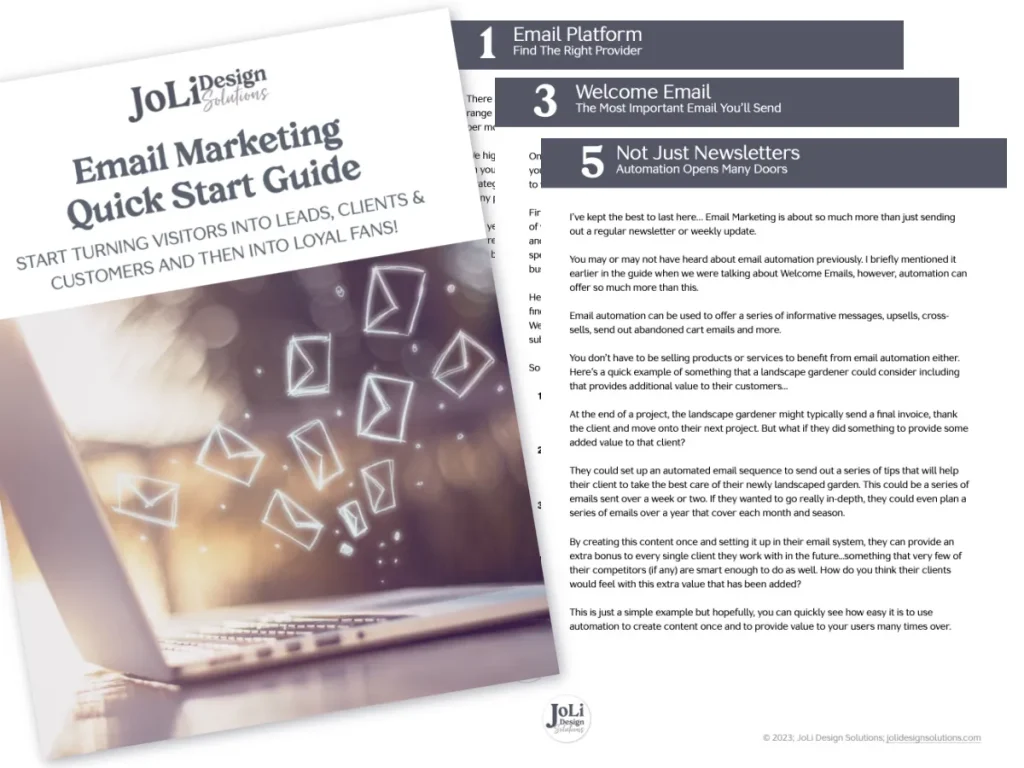You have either slaved away designing your own website, or you have invested time and money into someone else to design your website. Is it working for you? This is a serious question to ask yourself. We don’t know what we don’t know and it’s well worth it for your business to analyze your website from a different perspective.
It takes a great deal of time, strategy, skill and knowledge to design a website that is going to give you what you deserve. The last thing you want is for your website to just sit there looking like an outdated, dusty ol’ brochure because people can’t locate the information they need.
You have to make it simple for visitors to find what they are looking for when they land on your website. If you’re not conveying the right things to the right people, your site won’t perform well.
What Are The 7 Must-Have Elements Your Coaching Website Needs?
1 – Home Page
Your home page is the first thing most people will see when they land on your website. While some people will ‘get to’ your website by way of a free offer, a blog post, or a specific service, a LOT are going to land on your homepage. It should clearly state who you are and what you do. It should also offer easy, intuitive navigation to the other information the visitor is looking for
It matters what your website looks like. The first time someone looks at your homepage, they should walk away feeling like they know a little bit about your business. They should know they are in the right place immediately and be offered a way to take action.
Related Post: 5 Features You Need On Your Spiritual Coaching Homepage
2 – About Page
When I’m working with our web design clients, I always stress the importance of having a quality About Page. It’s the second most visited page on most websites.
Deliver the most important and relevant information towards the top of your About Page. The user is here for a reason. Include at least one CTA. Remember, most people aren’t just looking for more information, they’re seeking a deeper level of engagement with you and they want to take action.
What can you tell your clients to make them relate to you better? Why did you start your business? What does your business mean to you? How can you help them and why should they choose you over your competitors?
3 – Quality Content that Delivers Value
Your site should be filled with quality content your target audience is looking for. Each page should offer content that provides helpful information to build relationships, solve problems, earn trust, and explain your offerings – AND be easy to navigate to.
Provide your visitors with a journey that leads them through your website by way of images, buttons, calls-to-action and your main navigation.
Blogs are a great way to incorporate great content that delivers. Being consistent is more important than quantity. What does your audience need to know? How can you answer questions that help your target audience?
4 – Social Proof
Well-placed social proof shows that you’re trustworthy and you get results for those who use your services. Sprinkling testimonials throughout your website is best so that no matter where someone lands on your website, they are able to see the value you provide.
5 – Clear Calls-to-Action
At each point where you want the visitor to take some type of action, give them a clear call to do so. Tell them exactly what they need to do in order to receive the benefits you offer. Actions might include buying products, signing up for your list, following you on social media, checking out content elsewhere, or commenting.
6 – An email sign-up form
For the purposes of online marketing, the most important thing your website can do is grow your email list. You want to stay in touch with people who visit your website and build relationships through your emails so you can serve, provide value and offer your services down the road.
Your email sign-up form should be obvious to find. Don’t be shy about including it in different places around your website. You can place it near the top of your homepage or down the page a bit, in the footer, and on your blog post pages.
Related Post: Creating An Email Marketing Funnel For Your Spiritual Coaching Business
7 – Contact Information & Policies
Finally, make sure your website has your contact information (whatever you want to share with people is fine). You also MUST have a Privacy Policy and Terms of Service. If you are collecting any type of information – which most websites are at least building their email list – you need these two policies.
We partner with Termageddon to provide our clients with policies that are spot on all the laws and regulations. Plus, their policies automatically update on your website when the policy laws are updated. We highly recommend them!



